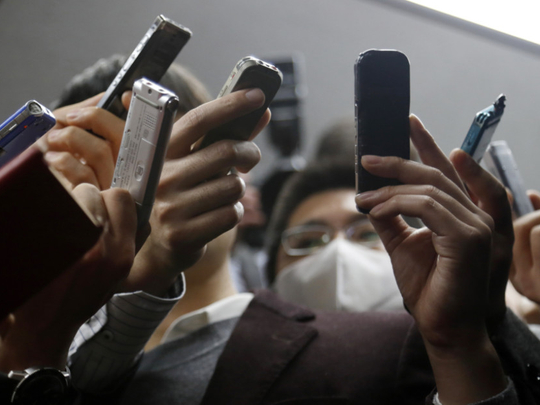
The drama is worthy of a Hollywood flick. The damsel is in distress, and two heroes are fighting over who will rescue her. The twist in the tale — one is a local lad, and the other a foreigner who comes bearing cash. Lots of it. So who will the damsel go for?
Thirteen board directors are locked in a divisive debate. They had until yesterday to decide the fate of electronics major Sharp — whether to go to Taiwan’s Foxconn for ¥660 billion (about Dh22 billion), or accept a ¥300-billion infusion from the state-backed INCJ fund.
A Sharp test case
The world is watching the battle for Sharp keenly. At stake is not only the future of a company but also, as Bloomberg reports, “a test case of Japan’s willingness to open its economy”. Moreover, the fact that Sharp even needs rescuing is newsworthy and a prominent indicator of how far Japan’s technology behemoths have fallen.
The New York Times highlights two trends in Asia: The rise of China as a tech titan and the slow decline of Japan’s once-mighty industry. The cutting edge Japanese firms enjoyed has become blunt.
McKinsey Global Institute’s Future of Japan report, released last March, observes that despite two painful “lost decades”, Japan remains the third-largest economy and the fourth-leading exporter in the world. “It is a nation with advanced technological know-how, a formidable manufacturing base, world-class infrastructure, and a large and affluent consumer market. This is a rare combination of strengths — and yet the world remains pessimistic about Japan’s prospects for growth and reinvention.”
Pooling resources
Japanese tech companies are increasingly responding to global competition by pooling resources and becoming efficient, consolidated entities. For example, Japan Display, a major supplier to Apple, emerged from the 2011 merger of the LCD operations of Sony, Toshiba and Hitachi.
Earlier this month, Vaio announced it is working on a merger with Toshiba and Fujitsu. The united entity will save on R&D, optimise production and marketing, and reduce cannibalisation.
However, not everyone is impressed. Damian Thong, Analyst at Macquarie Group, told Bloomberg merging three Japanese PC-makers might work in a niche market, but will probably have little chance of success outside of the country.
Prime Minister Shinzo Abe’s Abenomics programme, which, among other measures, calls for the weakening of the yen, has resulted higher profit margins for the overseas operations of companies like Sony and Panasonic, as well as making it expensive for competitors to import and sell in Japan. But the New York Times warns that Abenomics may now be “in trouble”.
The situation was grim enough for the Bank of Japan to pull “the last resort” and lower interest rates to below zero. However, Reuters reports this “shock decision” to spur growth has already been deemed a failure”.
And of course, the ripples of this will be felt strongly by Japan’s beleaguered tech companies. Perhaps a Hollywood ending is all it can hope for after all.







